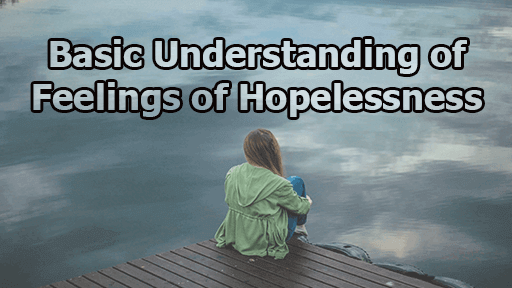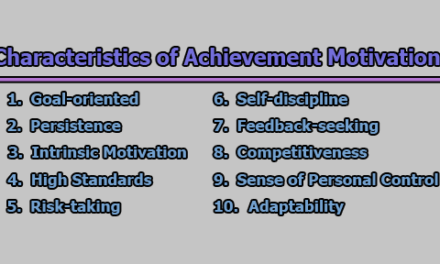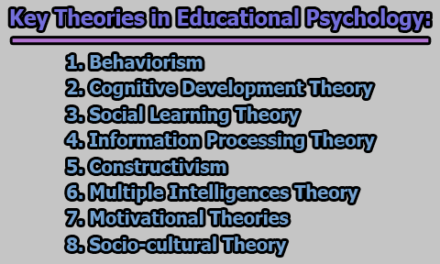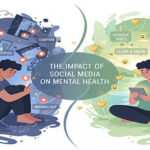Basic Understanding of Feelings of Hopelessness:
Hopelessness is a profound emotional state marked by a loss of optimism and the belief that one’s situation will not improve. It can affect individuals from all walks of life and is often linked to depression, trauma, or prolonged stress. Understanding hopelessness is essential because it not only influences mental health but also impacts daily functioning, relationships, and overall well-being. This article explores the basic understanding of feelings of hopelessness through various definitions, symptoms, causes, and types, and provides practical strategies to overcome it.
Definitions of Hopelessness:
Hopelessness has been explored across various disciplines, each offering a unique lens through which to understand this emotional and cognitive state. The following perspectives shed light on how different scholars and frameworks define hopelessness:
1. Psychological Perspective: In psychology, hopelessness is often viewed as a core component of depression. According to Aaron T. Beck’s Cognitive Theory of Depression, hopelessness arises from negative thought patterns and cognitive distortions. Beck proposed that individuals who are depressed tend to have a negative view of themselves, their world, and their future, forming what he called the “cognitive triad.”
Example: A person may think, “I’m worthless” (self), “Nothing good ever happens to me” (world), and “Things will never get better” (future).
Hopelessness is also considered a predictor of suicidal ideation, making it a crucial factor in clinical assessments.
2. Philosophical Viewpoint: Philosophers have interpreted hopelessness through existential and nihilistic lenses. Existentialists like Jean-Paul Sartre and Albert Camus saw hopelessness as a natural response to life’s inherent meaninglessness and unpredictability. Camus, in The Myth of Sisyphus, describes the absurdity of life and the human struggle to find meaning.
Nihilism, on the other hand, rejects all religious and moral principles, often leading to the belief that life is devoid of value or purpose. From this perspective, hopelessness is a rational acknowledgment of life’s futility.
Contrast: While psychology sees hopelessness as a treatable symptom, existential philosophers may view it as an unavoidable truth of the human condition.
3. Clinical Definitions: Clinically, hopelessness is recognized as a symptom and risk factor for several mental health disorders. The DSM-5 (Diagnostic and Statistical Manual of Mental Disorders, 5th Edition) lists hopelessness under diagnostic criteria for Major Depressive Disorder (MDD) and Persistent Depressive Disorder (Dysthymia).
In assessments like the Beck Hopelessness Scale (BHS), clinicians measure negative expectations about the future. High scores are often linked with increased risk for suicide.
Example: A clinician might use the BHS to monitor a patient’s treatment progress or to assess suicide risk.
4. Sociological Angle: From a sociological perspective, hopelessness can be understood as a social construct, shaped by external factors such as poverty, discrimination, lack of access to education, and systemic inequality. Sociologists argue that certain social environments foster a sense of powerlessness and despair.
Émile Durkheim, in his work on suicide, emphasized how social integration and regulation influence mental states. Individuals who feel alienated from society may experience anomic or fatalistic hopelessness.
Example: Youths in underprivileged communities may experience chronic hopelessness due to limited opportunities and systemic barriers.
Comparison and Contrast:
| Perspective | Focus | View on Hopelessness | Example |
| Psychological | Individual cognition | A symptom of mental illness; treatable | Negative thoughts about the future |
| Philosophical | Human existence | A natural response to absurdity; potentially inevitable | Existential dread or nihilism |
| Clinical | Diagnostic framework | A measurable symptom used in assessments | DSM-5, Beck Hopelessness Scale |
| Sociological | Social context | A result of structural and societal factors | Hopelessness in marginalized groups |
Each perspective contributes to a fuller understanding of hopelessness. While psychology and clinical views focus on internal processes and treatment, philosophy and sociology highlight external realities and existential conditions. Together, they provide a multidimensional framework for addressing hopelessness in individuals and communities.
Symptoms of Hopelessness:
Hopelessness is not limited to a single emotional response; it manifests in a range of psychological, emotional, cognitive, and physical symptoms. Understanding these indicators can help identify when someone may be experiencing hopelessness and allow for timely support or intervention.
- Persistent Sadness: One of the most common signs, persistent sadness involves a continuous feeling of emotional heaviness, gloom, or sorrow that does not easily go away, even in positive situations. This type of sadness often lacks a clear cause and can last for weeks or even months.
- Lack of Motivation: Hopelessness often saps a person’s will to act or pursue goals. Individuals may struggle to complete basic tasks such as getting out of bed, going to work or school, or maintaining hygiene. This lack of drive can affect every area of life, from personal care to professional obligations.
- Social Withdrawal: People experiencing hopelessness tend to isolate themselves from others. They may avoid family, friends, or social gatherings due to a belief that no one can help them, or that their presence is a burden to others.
- Sleep Disturbances: Sleep issues are common, including insomnia, restless sleep, or hypersomnia (excessive sleeping). These disturbances often worsen the emotional and physical toll of hopelessness, leading to a vicious cycle of fatigue and despair.
- Fatigue and Low Energy: Even with adequate rest, those struggling with hopelessness often feel persistently tired or drained. This may be linked to emotional exhaustion or the mental strain of negative thinking patterns.
- Negative Self-Talk: Individuals frequently engage in internal dialogues that reinforce negative beliefs, such as “I’m a failure,” “Nothing ever goes right,” or “There’s no point in trying.” This self-criticism deepens feelings of despair.
- Inability to Envision a Positive Future: A core symptom of hopelessness is the belief that the future holds no improvement or happiness. Individuals may say things like, “Things will never get better,” or “I don’t see a way out of this.”
- Indecisiveness: Hopelessness often brings cognitive fog, making it difficult to make even simple decisions. People may feel overwhelmed by choices or fear making the wrong one, leading to procrastination and inaction.
- Loss of Interest in Activities: Hobbies, interests, or activities that once brought joy may suddenly feel meaningless or burdensome. This symptom overlaps with anhedonia (the inability to feel pleasure), commonly associated with depression.
- Difficulty Concentrating: Cognitive functioning can be impaired, leading to poor memory, trouble focusing, or getting easily distracted. This symptom affects academic or job performance and can increase feelings of frustration and failure.
- Feelings of Worthlessness: People experiencing hopelessness often feel that they have no value or purpose. These thoughts may be rooted in past failures or a distorted self-image, and they can feed into a negative self-concept.
- Suicidal Thoughts or Ideation: In severe cases, hopelessness can lead to thoughts of death or suicide. Individuals may believe that ending their life is the only way to escape their pain. This is a critical warning sign that requires immediate professional help.
- Emotional Numbness: Instead of sadness, some may feel a lack of emotion altogether — a sense of emptiness or being disconnected from their feelings and from others. This emotional blunting is a defense mechanism and a sign of deep psychological distress.
- Physical Symptoms (e.g., Headaches or Stomach Issues): Chronic hopelessness can manifest physically through psychosomatic symptoms, such as tension headaches, digestive problems, muscle pain, or general malaise. These physical signs often accompany or amplify emotional distress.
Causes of Hopelessness:
Hopelessness does not arise in a vacuum; it is often the result of accumulated life experiences, environmental pressures, or internal psychological struggles. Below are ten common triggers that can lead to the development of hopelessness in individuals:
1. Traumatic Experiences: Experiences such as abuse, assault, accidents, loss of a loved one, or exposure to violence can have lasting emotional effects. Trauma can alter how individuals perceive themselves and the world, creating feelings of vulnerability and a belief that safety, happiness, or healing is unattainable.
Example: A person who survived a car accident may constantly fear the future, believing that danger and pain are unavoidable.
2. Chronic Stress: Persistent stress from demanding jobs, academic pressure, caregiving responsibilities, or ongoing personal conflict can wear down emotional resilience. When individuals feel like they are constantly “fighting” but getting nowhere, they may begin to feel hopeless about ever finding relief.
Example: Someone caring for a terminally ill relative may feel emotionally and physically exhausted, with no end in sight.
3. Mental Health Disorders (e.g., Depression, Anxiety): Mental illnesses, particularly depression, anxiety disorders, bipolar disorder, and PTSD, often involve distorted thinking patterns and overwhelming emotions that contribute to hopelessness. In depression, for instance, negative thoughts about the self, world, and future (Beck’s cognitive triad) are key indicators.
Example: A person with generalized anxiety may catastrophize future events, believing nothing will ever go right.
4. Long-Term Illness or Disability: Living with a chronic health condition or physical disability can lead to frustration, dependence, and a sense of helplessness. Over time, individuals may feel they have lost control over their lives and future.
Example: Someone with a degenerative illness might struggle with the idea that their condition will never improve.
5. Poverty or Financial Insecurity: Financial hardship can create an overwhelming sense of entrapment. Constant worry about how to meet basic needs—such as food, shelter, or healthcare—can fuel anxiety, stress, and hopelessness. The lack of economic opportunity can make individuals feel stuck in an unchangeable situation.
Example: A person working multiple low-wage jobs but still unable to pay rent may feel they’ll never escape poverty.
6. Unemployment or Job Dissatisfaction: Losing a job or remaining in an unfulfilling, toxic, or low-paying job can impact self-worth and identity. Work often gives people structure and a sense of purpose—without it, many struggle with feelings of inadequacy and despair.
Example: A recent college graduate unable to find work may begin to question their value or future potential.
7. Relationship Problems or Isolation: Conflict, betrayal, or the end of significant relationships can lead to feelings of abandonment and loneliness. Social isolation—whether due to loss, introversion, discrimination, or neglect—intensifies emotional pain and can make the future feel empty or unwelcoming.
Example: A person going through a divorce might feel emotionally disconnected and hopeless about future companionship.
8. Substance Abuse: The use of drugs or alcohol to cope with emotional pain often worsens mental health. Substance dependency can impair judgment, increase impulsivity, and deepen depression—creating a cycle of shame and hopelessness that feels impossible to escape.
Example: An individual using alcohol to numb emotional pain may become increasingly isolated and despairing.
9. Unrealized Goals or Failures: When people consistently fall short of their goals—especially in areas like education, career, or personal growth—they may begin to feel disillusioned. Repeated failure can erode confidence and lead to a belief that success is out of reach, no matter how hard one tries.
Example: An aspiring artist who faces years of rejection may feel that their dreams are futile.
10. Societal or Political Instability: Living in conditions of war, political unrest, systemic injustice, or widespread discrimination can lead to chronic fear and loss of hope. Individuals in such environments may feel powerless to change their circumstances or influence their society for the better.
Example: A young person living in a conflict zone may believe that peace, safety, or progress are unattainable.
Types of Hopelessness:
Hopelessness can manifest in various forms depending on the underlying emotional, cognitive, and behavioral responses. It is important to understand its types to better identify, assess, and intervene effectively. Broadly, hopelessness can be categorized based on its nature (cognitive, emotional, or behavioral) and specific psychological states or conditions.
A. Based on Nature:
1. Cognitive Hopelessness: This type involves negative thinking patterns and pessimistic beliefs about the future. People experiencing cognitive hopelessness often anticipate failure, expect disappointment, and feel that no action they take will make a difference. It is closely tied to depression and suicidal ideation, and is central in Beck’s theory of depression.
Example: A student who fails one exam begins to believe they will fail all future exams, regardless of effort.
2. Emotional Hopelessness: Emotional hopelessness is marked by deep feelings of despair, sadness, or emotional exhaustion. It often includes emotional numbness or the inability to feel positive emotions. This form typically arises after prolonged emotional pain, trauma, or loss.
Example: After losing a loved one, an individual may feel like joy or peace will never return to their life.
3. Behavioral Hopelessness: Behavioral hopelessness manifests as inaction, withdrawal, and avoidance. Individuals may stop pursuing goals, give up on challenges easily, or disengage from social or occupational responsibilities. This type is observable in decreased motivation and effort.
Example: A job seeker who has faced multiple rejections might stop applying for jobs altogether.
B. Specific Types of Hopelessness:
These are more nuanced variations of hopelessness that often overlap or emerge in specific contexts:
1. Alienation: A sense of being disconnected or different from others. Individuals feel unworthy of love or support, leading to isolation and emotional distance.
Example: A teenager who feels misunderstood by peers and family may begin to withdraw and believe no one cares.
2. Forsakenness: The belief that one has been abandoned or forgotten, especially during difficult times. It is a powerful emotional experience often rooted in betrayal or neglect.
Example: A patient battling a terminal illness may feel forsaken by friends who no longer visit.
3. Lack of Inspiration: A feeling of being mentally or creatively drained. It often strikes artists, students, or professionals when motivation or passion fades.
Example: A writer experiencing burnout might feel they’ll never write anything meaningful again.
4. Powerlessness: The perception that one’s actions have no impact on life outcomes. It leads to passivity and surrender, especially when facing ongoing challenges.
Example: A person in an abusive relationship may feel powerless to change their situation.
5. Oppression: Hopelessness caused by systemic barriers or discrimination. It stems from chronic marginalization and the belief that justice or equality is unreachable.
Example: An individual facing racial or gender-based discrimination may feel hopeless about societal change.
6. Limitedness: The belief that one’s abilities or opportunities are severely restricted. It leads to a sense of being “stuck” and unable to grow or progress.
Example: A person with a disability who encounters repeated barriers might internalize a belief in their limitations.
7. Situational Hopelessness: This occurs in response to specific life events such as job loss, a breakup, or a traumatic event. It is often temporary but intense.
Example: After being laid off unexpectedly, someone may feel hopeless about their financial future.
8. Chronic Hopelessness: A long-term state of despair that persists over time, often due to ongoing mental illness or a combination of life stressors. It can become part of a person’s worldview.
Example: Someone with a lifelong mood disorder may experience recurring hopelessness even during stable periods.
9. Despair: A deep and overwhelming sadness often associated with loss or existential crisis. Despair feels all-consuming and immobilizing.
Example: After a natural disaster, survivors may feel despair about rebuilding their lives.
10. Defeatism: A tendency to assume failure and give up easily. Defeatist individuals avoid challenges due to fear of inevitable loss or rejection.
Example: An athlete who assumes they’ll lose before even competing stops practicing altogether.
11. Helplessness: The belief that one cannot cope with challenges or solve problems, often leading to passivity and dependence. It is closely linked to learned helplessness.
Example: A student who repeatedly fails math tests may stop studying, convinced they can’t succeed.
12. Futility: A sense that all efforts are pointless or meaningless, regardless of the outcome. It often leads to demotivation and apathy.
Example: A social worker overwhelmed by systemic issues may feel that their work has no real impact.
13. Resignation: Acceptance of a negative situation without any attempt to change it, believing that efforts are useless or change is impossible.
Example: An elderly person facing poor living conditions may no longer seek help, thinking it’s too late.
14. Pessimism: A habitual expectation that bad things will happen. Chronic pessimists tend to interpret neutral events negatively and assume the worst.
Example: A person who always expects relationships to fail may avoid forming new ones altogether.
15. Nihilism: A belief that life is inherently meaningless, and nothing—values, morals, or efforts—truly matters. It is the most philosophical form of hopelessness and often linked to existential crises.
Example: An individual questioning the point of existence might conclude that all goals and values are illusions.
16. Dejection: A low mood or depressive state marked by disappointment or discouragement, often a reaction to unmet expectations.
Example: A student who fails to win a scholarship after years of effort may feel deeply dejected.
Degrees or Levels of Hopelessness:
Hopelessness exists on a spectrum, ranging from fleeting feelings of discouragement to persistent and overwhelming despair. Understanding the degrees or levels of hopelessness can help in identifying how serious a person’s condition is and what kind of intervention may be necessary.
1. Mild Hopelessness: Mild hopelessness is occasional and typically tied to specific situations. It is temporary in nature and often resolves once the triggering issue is addressed or circumstances improve.
Characteristics:
- Triggered by specific setbacks (e.g., failing a test, experiencing a breakup, missing a goal).
- Negative thinking is present but not pervasive or constant.
- Individual can still see some possibility for improvement or solution.
- Typically doesn’t significantly impair functioning.
- May include brief periods of sadness, frustration, or discouragement.
Example: A student who didn’t get accepted into their first-choice university may feel mildly hopeless for a few days but eventually regains optimism about other opportunities.
Support Needed: Encouragement, reassurance, and problem-solving strategies. Often self-managed or resolved with the support of friends and family.
2. Moderate Hopelessness: Moderate hopelessness is more persistent and begins to interfere with daily functioning. It may involve recurring negative thoughts about oneself or the future and could start to impact personal, academic, or work performance.
Characteristics:
- Present in multiple areas of life (e.g., work, relationships, self-esteem).
- Individuals may experience a reduced ability to cope with stress.
- Signs of social withdrawal, emotional exhaustion, and diminished motivation.
- The future appears increasingly bleak, though not entirely devoid of hope.
- It may include anxiety, sleep disturbances, or concentration difficulties.
Example: An unemployed individual who has been job hunting for months may begin to feel stuck, doubtful of their abilities, and unmotivated to continue trying.
Support Needed: Counseling, support groups, lifestyle changes, and potentially early clinical intervention to prevent progression to severe hopelessness.
3. Severe Hopelessness: Severe hopelessness is chronic, pervasive, and often associated with mental health disorders, especially major depressive disorder, bipolar disorder, and suicidal ideation. It is deeply embedded in the person’s worldview.
Characteristics:
- Persistent negative beliefs about self, life, and future.
- Belief that nothing will ever improve, regardless of effort.
- Daily functioning is severely impaired, including work, hygiene, relationships, and basic self-care.
- Feelings of worthlessness, emptiness, or meaninglessness dominate.
- May include suicidal thoughts, gestures, or attempts.
- Often co-occurs with symptoms of clinical depression, anxiety, or trauma-related disorders.
Example: A person living with untreated depression who believes their life has no purpose and contemplates suicide may be experiencing severe hopelessness.
Support Needed: Immediate clinical intervention, therapy (e.g., CBT, DBT), medication (e.g., antidepressants), and potentially crisis intervention or hospitalization in extreme cases.
Comparison Table:
| Level | Duration | Impact on Life | Typical Response |
| Mild | Short-term | Minimal | Encouragement, support, self-care |
| Moderate | Medium-term | Noticeable, across domains | Counseling, lifestyle changes |
| Severe | Long-term | Serious functional decline | Clinical treatment, crisis intervention |
Recognizing the degree of hopelessness is necessary to providing appropriate support. While mild hopelessness can often be self-managed or resolved with encouragement, moderate to severe forms require more structured intervention to prevent further emotional decline. Early identification and care can make a significant difference in the individual’s recovery and well-being.
How Hopelessness Can Affect Mental Health:
Hopelessness is not just an emotion—it is a powerful psychological state that can deeply affect mental health. When sustained over time, it can alter thought patterns, behaviors, and emotional responses, leading to a range of negative psychological outcomes. Below are ten significant ways in which hopelessness impacts mental health:
1. Development of Depression: Hopelessness is a core symptom and predictor of depression. When individuals feel that their circumstances will never improve, they may spiral into persistent sadness, fatigue, and a lack of interest in life. This negative outlook contributes to the onset and maintenance of major depressive disorder.
Example: A person who feels stuck in a job they hate may develop depression if they believe they have no way out or alternative options.
2. Increased Risk of Anxiety Disorders: Chronic hopelessness often fuels worry, fear, and a constant sense of dread, which can trigger or worsen anxiety disorders. The belief that the future is uncontrollable or threatening can lead to generalized anxiety, panic attacks, and social anxiety.
Example: Someone convinced that nothing good will happen might become overly anxious about everyday decisions or upcoming events.
3. Higher Likelihood of Suicidal Thoughts: Hopelessness is one of the strongest predictors of suicidal ideation and behavior. When individuals believe there is no hope for relief or improvement, suicide may be perceived as the only escape.
Example: A person with chronic illness who sees no possibility for recovery may begin to consider ending their life as a solution.
4. Decreased Self-Esteem: Persistent hopelessness can lead individuals to internalize failure, viewing themselves as incapable, flawed, or unworthy. Over time, this erodes self-esteem and leads to a negative self-image.
Example: A student who fails repeatedly and feels hopeless about academic success may begin to believe they are unintelligent or inferior.
5. Reduced Motivation and Productivity: When people feel that their actions will not lead to meaningful results, motivation diminishes. Hopeless individuals may neglect responsibilities, abandon goals, or stop trying altogether.
Example: An employee who believes promotions are based on favoritism may stop putting effort into their work.
6. Emotional Numbness: Hopelessness can cause a person to shut down emotionally, resulting in numbness or apathy. This emotional blunting can make it difficult to experience joy, love, or even sadness.
Example: A person who has given up on relationships may stop reacting emotionally to others or avoid emotional connections entirely.
7. Impaired Decision-Making: The cognitive fog and pessimism caused by hopelessness can interfere with clear thinking and judgment. Individuals may struggle with making even simple decisions or may constantly fear making the wrong choice.
Example: A job-seeker feeling hopeless might avoid applying anywhere due to overwhelming indecision and fear of rejection.
8. Disconnection from Others: Hopeless individuals often withdraw from social relationships, believing others won’t understand or that they’re a burden. This social isolation can worsen feelings of loneliness and depression.
Example: A person going through a difficult time may stop answering calls or engaging with loved ones, deepening their sense of disconnection.
9. Sleep and Appetite Disturbances: Hopelessness is linked with disruptions in basic physiological functions, including sleep and eating. It may result in insomnia, hypersomnia, loss of appetite, or emotional eating—symptoms often associated with depression.
Example: Someone overwhelmed by hopelessness may either overeat for comfort or skip meals entirely due to lack of interest.
10. Increased Substance Abuse: Many individuals turn to alcohol, drugs, or other addictive behaviors to escape the emotional pain of hopelessness. While this may provide short-term relief, it often worsens mental health and increases dependency.
Example: A person who feels hopeless about their future might begin using alcohol excessively to numb emotional distress.
Evidence-Based Strategies to Overcome Hopelessness:
Hopelessness can feel all-consuming, but it is not permanent. With the right strategies and support, individuals can regain a sense of purpose, motivation, and belief in a better future. The following ten evidence-based approaches have been shown to effectively combat feelings of hopelessness and support emotional healing:
1. Cognitive Behavioral Therapy (CBT): CBT is one of the most effective treatments for hopelessness, especially when linked with depression and anxiety. It helps individuals identify and challenge negative thought patterns, replacing them with more balanced, realistic beliefs.
How it works: CBT teaches people to recognize “automatic thoughts” (e.g., “Things will never get better”) and reframe them using evidence and logic.
Benefits: Improves mood, reduces suicidal ideation, builds resilience.
Example: A person who believes they’re a failure may learn to recognize that one setback doesn’t define their worth.
2. Mindfulness and Meditation: Practicing mindfulness involves focusing on the present moment without judgment. Meditation and breathing exercises reduce stress, calm the mind, and create space between a person and their negative thoughts.
How it works: Mindfulness helps individuals become aware of their thoughts and feelings without becoming overwhelmed.
Benefits: Lowers anxiety, reduces emotional reactivity, enhances self-awareness.
Example: Regular meditation can help someone detach from repetitive negative thoughts and feel more grounded.
3. Social Support and Connection: Strong social relationships are powerful antidotes to hopelessness. Talking with trusted friends, family, or support groups can restore a sense of belonging and provide emotional relief.
How it works: Emotional connection provides validation, empathy, and practical problem-solving support.
Benefits: Reduces isolation, increases hope and optimism.
Example: Joining a peer support group allows individuals to realize they’re not alone in their struggles.
4. Physical Activity and Exercise: Exercise boosts mood through the release of endorphins and serotonin, the brain’s “feel-good” chemicals. It also builds routine and improves sleep and self-esteem.
How it works: Regular movement, even light walking, activates reward centers in the brain.
Benefits: Alleviates symptoms of depression, enhances energy and motivation.
Example: A daily 20-minute walk can lift mood and help break the cycle of emotional stagnation.
5. Setting Small, Achievable Goals: When life feels overwhelming, setting realistic, short-term goals can provide structure, motivation, and a sense of accomplishment.
How it works: Breaking tasks into manageable steps restores a sense of control and progress.
Benefits: Builds confidence, reduces paralysis caused by helplessness.
Example: A job-seeker might start by updating their resume before applying to new positions.
6. Journaling and Emotional Expression: Writing down thoughts and feelings can be a powerful emotional release and a tool for self-reflection. Journaling helps individuals identify patterns and triggers contributing to hopelessness.
How it works: Expressive writing can clarify thoughts and reduce internal emotional clutter.
Benefits: Reduces stress, enhances insight, supports emotional processing.
Example: Daily journaling about fears and hopes can help individuals track emotional growth and shifts in perspective.
7. Medication (Under Professional Guidance): In cases where hopelessness is linked to clinical depression, anxiety, or mood disorders, medication may be necessary to restore chemical balance in the brain.
How it works: Antidepressants, mood stabilizers, or anti-anxiety medications can regulate brain function.
Benefits: Improves mood, increases energy, reduces suicidal ideation.
Important: Always consult a licensed psychiatrist or doctor before starting or stopping any medication.
8. Volunteering and Helping Others: Helping others fosters a sense of purpose and usefulness, which can combat feelings of futility and disconnection.
How it works: Altruism shifts focus away from one’s own problems and nurtures a sense of value.
Benefits: Enhances mood, builds empathy, fosters community connection.
Example: Volunteering at a local food bank or mentoring youth can rekindle a sense of meaning.
9. Spirituality or Faith-Based Practices: Spiritual beliefs and practices, such as prayer, meditation, or attending services, often provide a framework for hope, meaning, and resilience.
How it works: Faith can offer a deeper sense of purpose, forgiveness, and hope in times of despair.
Benefits: Encourages reflection, reduces existential anxiety, builds community.
Example: A person struggling with loss may find peace and strength in spiritual texts or rituals.
10. Seeking Professional Help (Therapists, Counselors, Crisis Services): Talking to a trained mental health professional is crucial when hopelessness becomes persistent or debilitating. Therapy can provide tailored strategies, emotional support, and a safe space for healing.
How it works: Licensed professionals assess symptoms and guide individuals through structured interventions.
Benefits: Early treatment prevents worsening, fosters hope and empowerment.
Example: A person experiencing suicidal thoughts should seek immediate help from a counselor or emergency mental health service.
It is apparent that hopelessness is a complex and deeply affecting emotional state that can arise from various life experiences and mental health challenges. Recognizing its symptoms, causes, and types is crucial for early intervention and recovery. While it can feel overwhelming, evidence-based strategies and support systems offer hope and a path forward. With the right help, individuals can regain a sense of purpose, motivation, and control over their lives.
Frequently Asked Questions (FAQs):
What is hopelessness?
Hopelessness is a feeling or belief that nothing good will happen, and that personal struggles or pain will not improve. It is often characterized by a lack of motivation, negative thoughts about the future, and emotional numbness.
Is hopelessness the same as depression?
Not exactly. Hopelessness is a symptom of depression but can also occur on its own due to life circumstances. However, persistent hopelessness is often a warning sign of clinical depression or other mental health issues.
What causes hopelessness?
Common causes include trauma, chronic stress, mental illness, poverty, isolation, relationship problems, and unfulfilled goals. It can also be triggered by long-term illness or political/social instability.
What are the symptoms of hopelessness?
Symptoms include persistent sadness, lack of motivation, social withdrawal, indecisiveness, sleep issues, emotional numbness, and sometimes suicidal thoughts. Physical signs like headaches or fatigue may also appear.
Can hopelessness be treated?
Yes. Hopelessness can be managed and treated with approaches like Cognitive Behavioral Therapy (CBT), medication, exercise, mindfulness, and strong social support. Seeking professional help is highly recommended if symptoms persist.
Are there different types of hopelessness?
Yes. Hopelessness can be cognitive (negative thoughts), emotional (despair), or behavioral (giving up). Specific types include alienation, powerlessness, defeatism, and chronic hopelessness, among others.
Is feeling hopeless a sign of weakness?
No. Hopelessness is a human emotional response to overwhelming or prolonged hardship. It is not a personal failure and does not reflect weakness. Many people experience it at some point in life.
How does hopelessness affect mental health?
It can lead to or worsen depression, anxiety, suicidal ideation, and substance abuse. It may also reduce self-esteem, impair decision-making, and cause physical health issues like poor sleep and appetite changes.
What should I do if someone I know feels hopeless?
Listen without judgment, offer emotional support, encourage them to seek professional help, and if they are in immediate danger, contact emergency services or a mental health crisis line.
Can hopelessness be a long-term condition?
Yes, if left unaddressed, hopelessness can become chronic and deeply embedded in a person’s worldview. However, with the right interventions and support, recovery is possible.
Is hopelessness learned?
Yes, in some cases. According to learned helplessness theory (Seligman, 1975), individuals may develop hopelessness after repeated failures or uncontrollable negative events. They begin to believe that their efforts make no difference, which reinforces hopeless thinking patterns.
What is the root cause of hopelessness?
The root cause often lies in a combination of internal and external factors, such as past trauma, ongoing stress, unmet emotional needs, negative thinking patterns, and environmental pressures. A person’s belief system and coping mechanisms also play a crucial role.
Is hopelessness part of anxiety?
Yes, it can be. While anxiety is typically characterized by excessive worry and fear about the future, persistent anxiety can lead to a sense of helplessness or hopelessness, especially when someone feels overwhelmed and unable to manage their stress or fear.
References:
- American Psychiatric Association. (2022). Diagnostic and statistical manual of mental disorders (5th ed., text rev.). American Psychiatric Publishing.
- Abramson, L., Metalsky, G., & Alloy, L. (1989). Hopelessness depression: A theory-based subtype of depression. Psychological Review, 96, 358–372. https://doi.org/10.1037/0033-295X.96.2.358
- Abramson, L. Y., Seligman, M. E., & Teasdale, J. D. (1978). Learned helplessness in humans: Critique and reformulation. Journal of Abnormal Psychology, 87(1), 49–74. https://doi.org/10.1037/0021-843X.87.1.49
- Beck, A. T. (1976). Cognitive therapy and the emotional disorders. International Universities Press.
- Beck, A.T. (1993). Beck hopelessness scale (BHS). Psychological Corporation.
- Beck, A. T. (1993). Cognitive therapy: Past, present, and future. Journal of Consulting and Clinical Psychology, 61(2), 194–198. https://doi.org/10.1037/0022-006x.61.2.194
- Beck, A. T., & Steer, R. A. (1988). Beck hopelessness scale manual. The Psychological Corporation.
- Beck, A. T., Weissman, A., Lester, D., & Trexler, L. (1974). The measurement of pessimism: The hopelessness scale. Journal of Consulting and Clinical Psychology, 42(6), 861–865. https://doi.org/10.1037/h0037562
- Bonanno, G. A., & Burton, C. L. (2013). Regulatory flexibility: An individual differences perspective on coping and emotion regulation. Perspectives on Psychological Science, 8(6), 591–612. https://doi.org/10.1177/1745691613504116
- Cheavens, J. S., Feldman, D. B., Gum, A., Michael, S. T., & Snyder, C. R. (2006). Hope therapy in a community sample: A pilot investigation. Social Indicators Research, 77(1), 61–78. https://doi.org/10.1007/s11205-005-5553-0
- Durkheim, É. (1979). Suicide: A study in sociology (J. A. Spaulding, Trans.). The Free Press. (Original work published 1897)
- Everson, S. A., Goldberg, D. E., Kaplan, G. A., Cohen, R. D., Pukkala, E., Tuomilehto, J., & Salonen, J. T. (1996). Hopelessness and risk of mortality and incidence of myocardial infarction and cancer. Psychosomatic Medicine, 58(2), 113–121. https://doi.org/10.1097/00006842-199603000-00003
- Fritz, H. L., Russek, L. N., & Dillon, M. M. (2017). Humor use moderates the relation of stressful life events with psychological distress. Personality & Social Psychology Bulletin, 43(6), 845–859. https://doi.org/10.1177/0146167217699583
- Gum, A., Shiovitz-Ezra, S., & Ayalon, L. (2017). Longitudinal associations of hopelessness and loneliness in older adults: Results from the US health and retirement study. International Psychogeriatrics, 29, 1451–1459. https://doi.org/10.1017/S1041610217000904
- Kabat-Zinn, J. (2003). Mindfulness-based interventions in context: Past, present, and future. Clinical Psychology: Science and Practice, 10(2), 144–156. https://doi.org/10.1093/clipsy.bpg016
- Kuiper, N. A., McKenzie, S. D., & Belanger, K. A. (1995). Cognitive appraisals and individual differences in sense of humor: Motivational and affective implications. Personality and Individual Differences, 19(3), 359–372. https://doi.org/10.1016/0191-8869(95)00072-E
- Lazarus, R. S. (1999). Hope: An emotion and a vital coping resource against despair. Social Research, 66(2), 653–678.
- Marchetti, I. (2018). Hopelessness: A network analysis. Cognitive Therapy and Research, 43, 611–619. https://doi.org/10.1007/s10608-018-9981-y
- Marchetti, I., Alloy, L. B., & Koster, E. H. W. (2023). Breaking the vise of hopelessness: Targeting its components, antecedents, and context. International Journal of Cognitive Therapy, 16(3), 285–319. https://doi.org/10.1007/s41811-023-00165-1
- Moellendorf, D. (2006). Hope as a political virtue. Philosophical Papers, 35(3), 413–433. https://doi.org/10.1080/05568640609485189
- Nolen-Hoeksema, S. (2000). The role of rumination in depressive disorders and mixed anxiety/depressive symptoms. Journal of Abnormal Psychology, 109(3), 504–511. https://doi.org/10.1037/0021-843X.109.3.504
- Nolen-Hoeksema, S., Wisco, B. E., & Lyubomirsky, S. (2008). Rethinking rumination. Perspectives on Psychological Science, 3(5), 400–424. https://doi.org/10.1111/j.1745-6924.2008.00088.x
- Orwelius, L., Kristenson, M., Fredrikson, M., Walther, S., & Sjöberg, F. (2017). Hopelessness: Independent associations with health‐related quality of life and short‐term mortality after critical illness: A prospective, multicentre trial. Journal of Critical Care, 41, 58–63. https://doi.org/10.1016/j.jcrc.2017.04.044
- Polanco-Roman, L., & Miranda, R. (2013). Culturally related stress, hopelessness, and vulnerability to depressive symptoms and suicidal ideation in emerging adulthood. Behavior Therapy, 44(1), 75–87. https://doi.org/10.1016/j.beth.2012.07.002
- Pompili, M., Innamorati, M., Gonda, X., Serafini, G., Sarno, S., Erbuto, D., Palermo, M., Seretti, M., Stefani, H., Lester, D., Perugi, G., Akiskal, H., Siracusano, A., Rihmer, Z., Tatarelli, R., Amore, M., & Girardi, P. (2013). Affective temperaments and hopelessness as predictors of health and social functioning in mood disorder patients: A prospective follow-up study. Journal of Affective Disorders, 150(2), 216–22. https://doi.org/10.1016/j.jad.2013.03.026
- Ribeiro, J., Huang, X., Fox, K., & Franklin, J. (2018). Depression and hopelessness as risk factors for suicide ideation, attempts and death: Meta-analysis of longitudinal studies. British Journal of Psychiatry, 212, 279–286. https://doi.org/10.1192/bjp.2018.27
- Seligman, M. E. P. (1972). Learned helplessness. Annual Review of Medicine, 23(1), 407–412. https://doi.org/10.1146/annurev.me.23.020172.002203
- Seligman, M. E. P., Steen, T. A., Park, N., & Peterson, C. (2005). Positive psychology progress: Empirical validation of interventions. American Psychologist, 60(5), 410–421. https://doi.org/10.1037/0003-066x.60.5.410
- Serafini, G., Lamis, D., Aguglia, A., Amerio, A., Nebbia, J., Geoffroy, P., Pompili, M., & Amore, M. (2019). Hopelessness and its correlates with clinical outcomes in an outpatient setting. Journal of Affective Disorders, 263, 472–479. https://doi.org/10.1016/j.jad.2019.11.144
- Snow, N. (2013). Hope as an intellectual virtue. In M. Austin (Ed.), Virtues in action–new essays in applied virtues ethics (pp. 153–170). Palgrave Macmillan.
- Snow, N. (2019). Faces of hope. In R. Green (Ed.), Theories of hope: Exploring alternative affective dimensions of human experience (pp. 5–23). Rowman & Littlefield.
- Snyder, C. R. (2002). Hope theory: Rainbows in the mind. Psychological Inquiry, 13(4), 249–275. https://doi.org/10.1207/S15327965PLI1304_01
- Snyder, C. R., & Lopez, S. J. (2002). Handbook of positive psychology. Oxford University Press.
- Steed, L. (2001). Further validity and reliability evidence for Beck hopelessness scale scores in a nonclinical sample. Educational and Psychological Measurement, 61(2), 303–316. https://doi.org/10.1177/00131640121971121
- Steeg, S., Haigh, M., Webb, R., Kapur, N., Awenat, Y., Gooding, P., Pratt, D., & Cooper, J. (2016). The exacerbating influence of hopelessness on other known risk factors for repeat self-harm and suicide. Journal of Affective Disorders, 190, 522–528. https://doi.org/10.1016/j.jad.2015.09.050
- Stockdale, K. (2019). Emotional hope. In C. Blöser & T. Stahl (Eds.), The moral psychology of hope (pp. 93–112). Rowman & Littlefield.
- Stotland, E. (1969). The psychology of hope. Jossey-Bass.
- Yalom, I. D. (1980). Existential psychotherapy. Basic Books.

Library Lecturer at Nurul Amin Degree College










